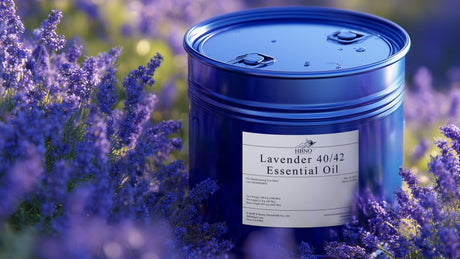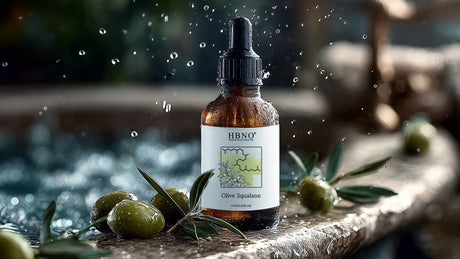Neem oil, derived from the seeds of the neem tree (Azadirachta indica), has been utilized for centuries in traditional medicine and agriculture due to its potent insecticidal and therapeutic properties. In recent years, pet owners have explored neem oil as a natural alternative for managing fleas on dogs and cats. This comprehensive guide delves into the efficacy of neem oil in flea control, its benefits, application methods, safety considerations, and the advantages of using organic neem carrier oils.
Understanding Neem Oil and Its Insecticidal Properties
Neem oil contains active compounds such as azadirachtin, nimbin, and salannin, which contribute to its insect-repelling capabilities. Azadirachtin, in particular, disrupts the hormonal systems of insects, inhibiting their ability to feed, breed, and undergo metamorphosis. This makes neem oil an effective deterrent against various pests, including fleas.
Unlike chemical flea treatments that can contain harsh pesticides, neem oil provides a more natural approach. It affects fleas by interfering with their central nervous system, leading to disorientation and a decreased ability to reproduce. This disruption helps control flea infestations without exposing pets to synthetic chemicals that may have adverse effects.
Efficacy of Neem Oil Against Fleas
Scientific research supports the effectiveness of neem oil as an insecticide. A study published in the Journal of Medical Entomology found that applying azadirachtin, a key component of neem oil, to infested dogs resulted in a 93.53% reduction in fleas over 19 days. This suggests that neem oil could serve as an excellent natural alternative for flea control in pets.
Additionally, neem oil does more than just repel fleas-it also disrupts their lifecycle. By preventing flea eggs and larvae from developing into adult fleas, neem oil significantly reduces the risk of re-infestation. This makes it a highly effective long-term solution.
Benefits of Using Neem Oil for Pets
1. Natural Flea Repellent
Neem oil serves as a natural alternative to chemical flea treatments, repelling and killing fleas without exposing pets to synthetic pesticides. Unlike chemical treatments that often contain harsh ingredients, neem oil provides a gentle yet effective solution.
2. Skin Health Support
Beyond its insecticidal properties, neem oil is rich in fatty acids and vitamin E, which nourish the skin and promote healing. Its anti-inflammatory and antimicrobial properties can soothe irritated skin, reduce redness, and combat infections caused by flea bites. This makes neem oil particularly useful for pets with sensitive or allergy-prone skin.
3. Environmental Safety
Neem oil is biodegradable and poses minimal risk to the environment, making it an eco-friendly choice for pet care. Unlike synthetic pesticides, which can persist in the environment for extended periods, neem oil naturally breaks down without leaving harmful residues.
4. Effective Against Other Pests
In addition to fleas, neem oil is known to repel ticks, lice, mosquitoes, and mites. This makes it a versatile pest-control solution for pets that spend a lot of time outdoors.

Application Methods for Dogs
When using neem oil on dogs, it is essential to dilute it properly to ensure safety and effectiveness. Here are some common application methods:
1. Neem Oil Spray
Ingredients:
- 1 part Organic Neem Carrier Oil
- 10 parts warm water
- A few drops of mild liquid soap (as an emulsifier)
Instructions:
- Mix the ingredients in a spray bottle.
- Shake well to combine.
- Lightly mist your dog's coat, avoiding the eyes, nose, and mouth.
- Allow the solution to air dry.
- Apply every 7-10 days or as needed.
2. Neem Oil Shampoo Additive
Instructions:
- Add a few drops of Organic Neem Carrier Oil to your dog's regular shampoo.
- Bathe your dog as usual, ensuring thorough rinsing.
- This method can help maintain a flea-repellent effect between treatments.
3. Spot Treatment
Instructions:
- Dilute neem oil with a carrier oil (e.g., coconut oil) at a ratio of 1:10.
- Apply a small amount to areas where fleas are commonly found, such as the base of the tail, behind the ears, and under the legs.
- Use sparingly to avoid skin irritation.

Safety Considerations for Cats
While neem oil is generally safe for dogs, caution is advised when considering its use on cats. Cats are more sensitive to certain substances, and there is limited research on the safety of neem oil for felines. Some sources suggest that neem and other essential oils may not be safe for cats, so it is best to consult with a veterinarian before using neem oil on your cat.
Possible Side Effects in Cats
- Lethargy
- Drooling
- Skin irritation
- Vomiting or diarrhea
If any of these symptoms occur, discontinue use immediately and consult a veterinarian.

Choosing the Right Neem Oil
For optimal results and safety, select high-quality neem oil products. Look for cold-pressed, virgin, organic neem carrier oil, as this ensures the oil retains its beneficial properties without contamination from pesticides or solvents. Products like those offered by HBNO provide premium neem carrier oil suitable for various applications.
What to Look for in a High-Quality Neem Oil
- Cold-pressed extraction
- USDA-certified organic
- Free from additives or synthetic preservatives
Additional Flea Prevention Tips
While neem oil is an effective flea control method, additional preventive measures can enhance its effectiveness:
1. Regular Grooming
- Brush your pet's fur daily to remove flea eggs and larvae.
- Use a flea comb to check for fleas and flea dirt.
2. Clean Your Pet's Environment
- Wash pet bedding frequently in hot water.
- Vacuum carpets, rugs, and furniture regularly.
- Treat outdoor areas where your pet spends time with natural flea deterrents.
3. Maintain a Healthy Diet
- A healthy diet strengthens your pet's immune system, making them less attractive to fleas.
- Add natural flea-repelling supplements like brewer's yeast and garlic (in veterinarian-approved amounts).
Conclusion
Neem oil presents a natural and effective solution for managing fleas on dogs, offering insecticidal properties while supporting skin health. However, due to the sensitivity of cats to certain compounds, it is crucial to consult with a veterinarian before using neem oil on felines. By choosing high-quality organic neem carrier oil and following proper application methods, pet owners can provide a safer alternative to conventional chemical treatments.
Key Takeaways
- Neem oil disrupts the flea lifecycle, preventing re-infestation.
- It offers additional benefits such as skin nourishment and environmental safety.
- Proper dilution and application methods are essential for effectiveness and pet safety.
- Regular grooming and environmental hygiene enhance flea control.
By incorporating neem oil into your pet care routine, you can provide a natural and holistic approach to flea management while ensuring the well-being of your furry companions.
Disclaimer: Always consult with a veterinarian before introducing new treatments to your pet's care regimen. Monitor your pet for any adverse reactions when using neem oil and discontinue use if any signs of irritation occur.



